Viltrox EF EOS M2 speedbooster test
This adapter allows the use of an EF lens on an EF-M mount with an wider angle of view and a doubled aperture.
It does not work with EF-S lenses, nor on older FDs whose bayonet would destroy its lens. On EF lens, it allows to find almost the same viewing angle as on full frame cameras.
It may happen that your copy of the adapter does not focus to infinity. In this case it must be adjusted, which is done by turning the internal block in the case, in the direction of the needles of a watch. You can also very easily update your firmware by connecting it via USB to a computer, which gives access to the directory of the adapter in which you just have to copy the downloaded file.
To test the image quality produced with this speedbooster, I use the EF 40mm F/2.8 lens, which then becomes the equivalent of a 28mm F/2. It is placed on a Canon M6 and I compare the image with that produced when the EF EF-M adapter is used. I also compare with the 15-45 kit lens.
The distance to the subject is modified so as to keep the same viewing angle, so I get closer to the subject in 28mm compared to 40mm.
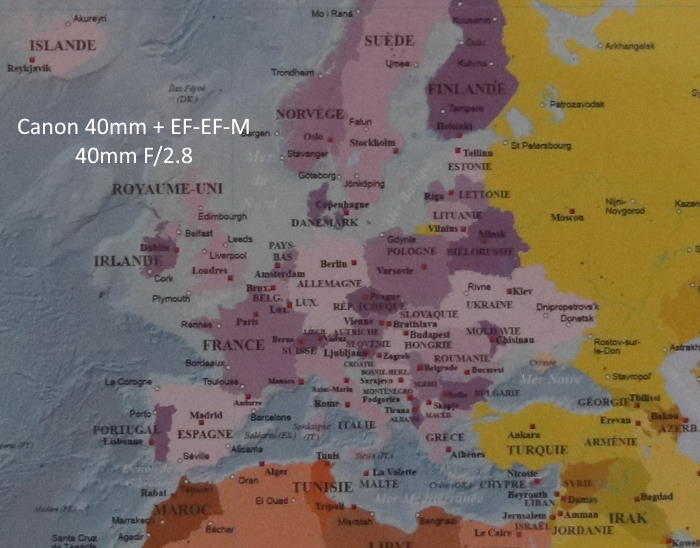
The same image with the focal length reduced by the speedbooster loses very little sharpness.
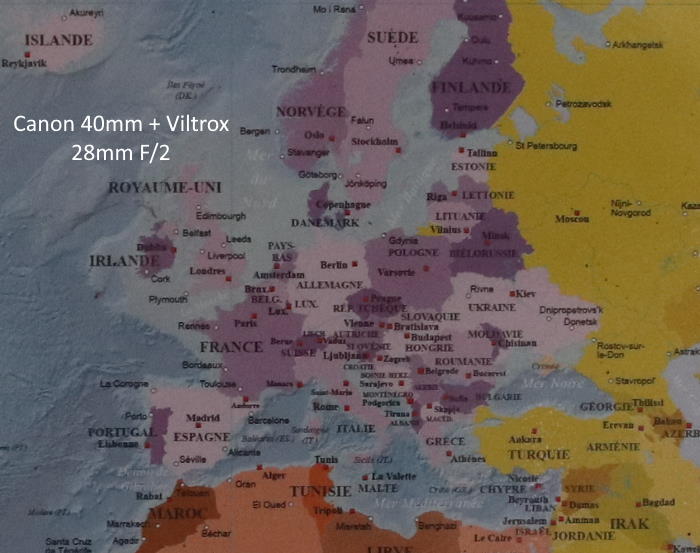
We can compare it with the image produced by the kit lens, at the same focal length. The latter is clearly less sharp.
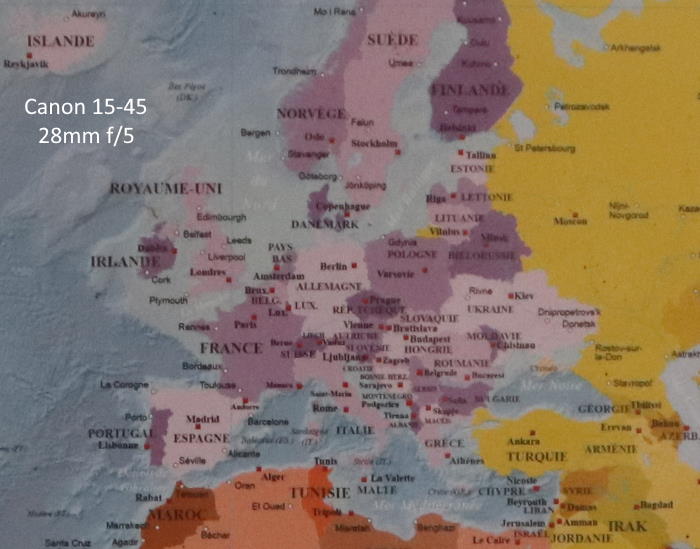
The 40mm F/2.8 lens already produces a better image than the 15-45 kit lens at the same 40mm focal length as seen below. This advantage remains with the speedbooster at 28mm.
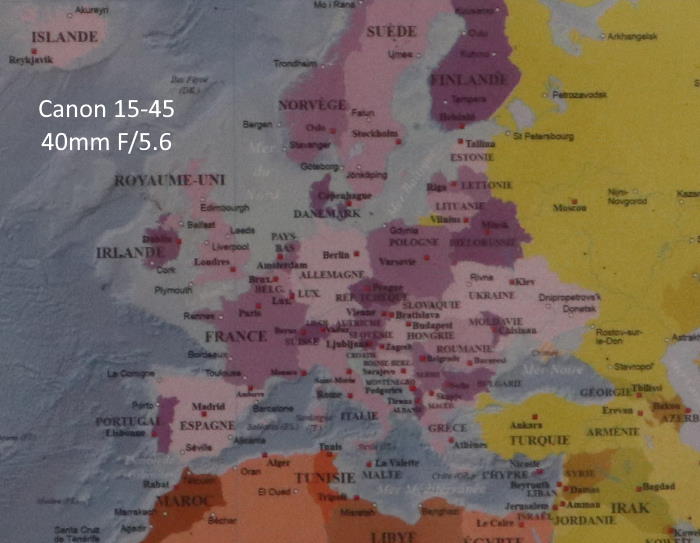
We can also try the venerable Canon EF 28-90 F4-5.6, not very bright and not stabilized, that the speedbooster transforms into a 19-64mm F2.8-5. No big difference with the kit at the same focal length of 28mm, we can still read the name of the places on the map.
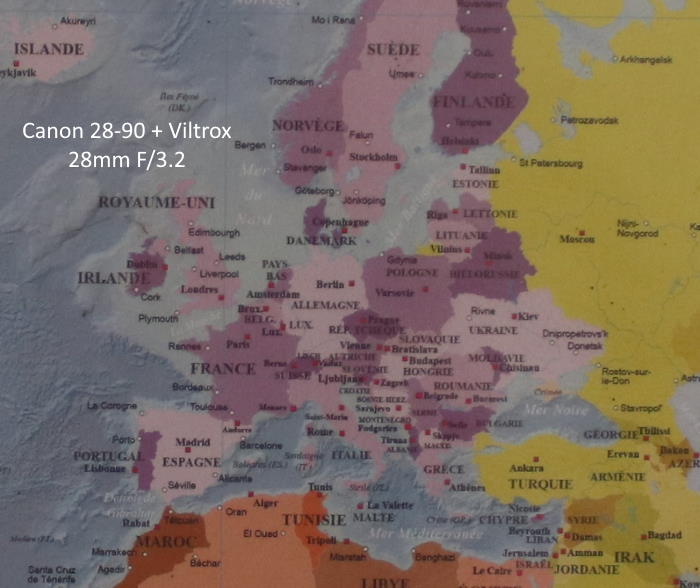
Conclusions
In daylight, the Viltrox adapter placed on a lens like the 40mm F/2.8 does not reduce the image quality on the test picture, that is flat. It offers an even greater advantage in low light with an aperture of F/2 against F/3.5, it is four times brighter.
In real shots, so on 3D subjects, it's different, the edges are more blurred. The center also loses sharpness. You will have to spend more with a Metabones to obtain a homogeneous image.
This adapter is mostly useful on older lenses like the Canon 28-90 , which is not very light, doubling the aperture further improves the quality of the image. In addition to photos from this test, photos taken in real use produce improved images with the speedbooster. The reason is that when you adapt a full-frame lens directly to APS-C, only the central part of the lens is projected onto the sensor, and it is not designed for that. The speedbooster takes the image over the entire surface of the lens before reducing it to project it onto the sensor.
Old EF full-frame lenses can come out of the cupboards and find a new life!
The autofocus operates at the same speed as with the EF EF-M adapter.
More examples:
- Canon 28-90 with EF-EF-M adapter, 28mmn f/4.
- Canon 28-90 with EF-EF-M adapter, 40mm f/4.5.
- Canon 28-90 with Viltrox speedbooster, 40mm F/3.2. (56mm without speedboster).






